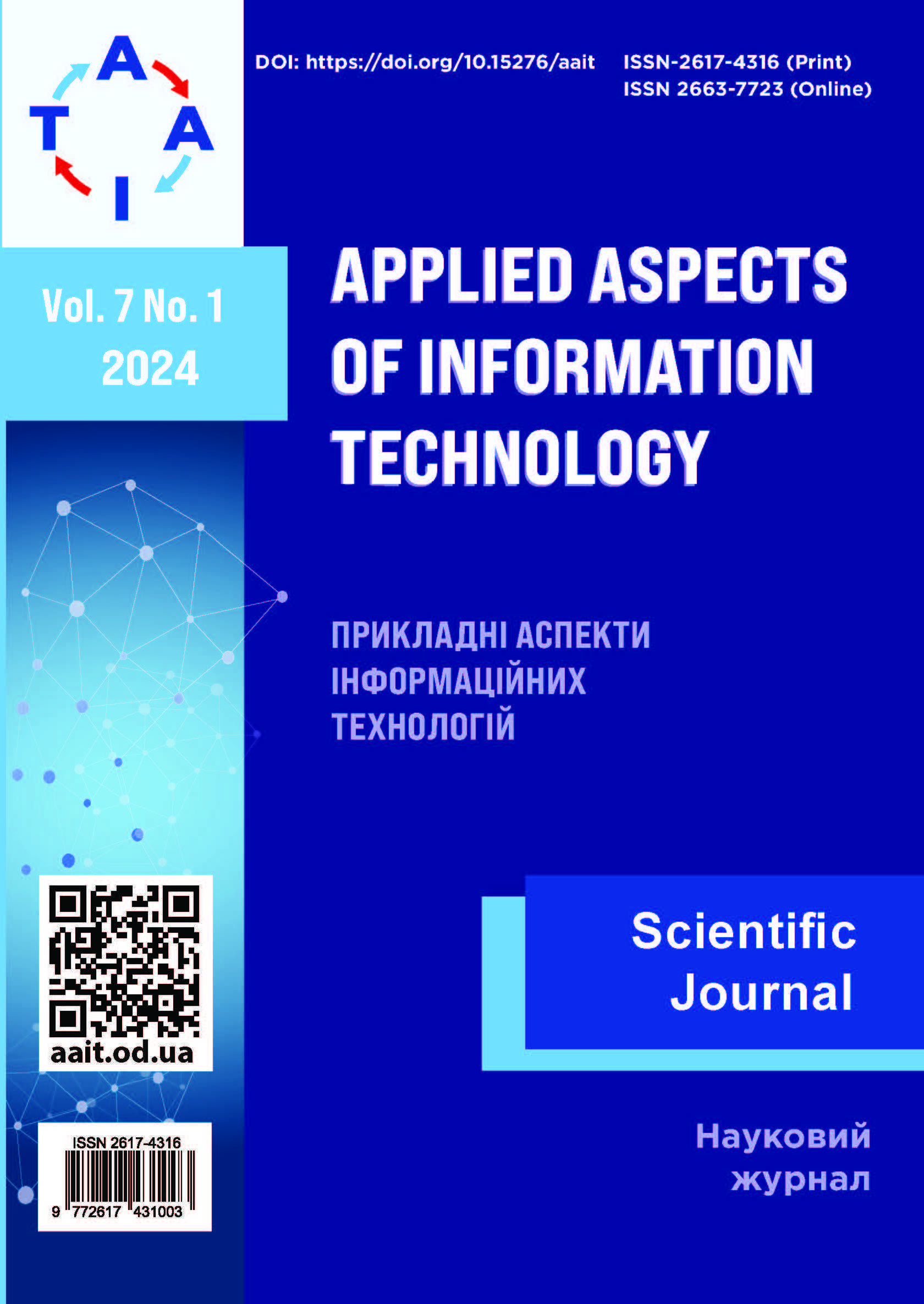Передавальне навчання мережі Xception з ранньою зупинкою для визначення віку людини
DOI:
https://doi.org/10.15276/aait.07.2024.6Ключові слова:
визначення віку людини, мережа Xception, налаштування параметрів, рання зупинка, нерівномірно освітлені зображення, передавальне навчанняАнотація
Швидкий розвиток глибокого навчання привертає більше уваги до аналізу зображень обличчя людини. Методи оцінки
віку людини за зображеннями обличчя на основi глибокого навчання бiльш ефективнi порівняно з методами на основі
антропометричних моделей, моделей активного зовнішнього вигляду, текстурних моделей, підпростору шаблонів старіння.
Однак мережі глибокого навчання потребують більшої обчислювальної потужності для обробки зображень. Попередньо
навчені моделі працюють без потреби у великій кількості зразків, а час навчання менший. Однак значення параметpiв,
отриманих в результатi навчання, значно впливають на ефективність попередньо навченої нейронної мережі. Також
потрібно враховувати особливості оброблюваних зображень, зокрема, умови, у яких їх отримано. Останнім часом
визначення вiку людини за зображенням обличчя реалізується у додатках пристроїв з обмеженим джерелом обчислень,
наприклад, у смартфоні. Під час фотографування обличчя людини камерою смартфона дуже складно забезпечити
рівномірне освітлення. Метою дослідження, є зниження помилки оцiнки вiку людини за нерiвномiрно освiтленим
зображенням обличчя шляхом застосування ранньої зупинки передавального навчання мережi Xception. Запропоновано
методику попереднього навчання нейронних мереж, яка використовує ранню зупинку навчання, якщо покращення
результатів не спостерігається протягом певної кількості епох. Потім відновлюються мережеві ваги з епохи з найкращим
значенням функцiї втрат на валiдацiйних даних. У результаті середня абсолютна помилка оцінки віку шляхом застосування
навченою за запропонованою методикою мережею Xception за нерівномірно освітленими тестовими зображеннями
становила близько п'яти рокiв. Обрання Xception обумовлене тим, що кількість параметрів цієї мережі менша, ніж у iнших
мереж, якi застосовувалися для оцiнювання вiку людини. Це зменшує споживання ресурсів пристроїв з обмеженими
обчислювальними можливостями. Перспективами подальших досліджень є зменьшення рiвня нерiвномiрності освiтлення
зображеннь обличчя для зменьшення помилки оцiнки вiку людини. Також для зменшення споживання обчислювальних
ресурсів перспективним є застосування швидких перетворень у згорткових шарах мережі Xception.










